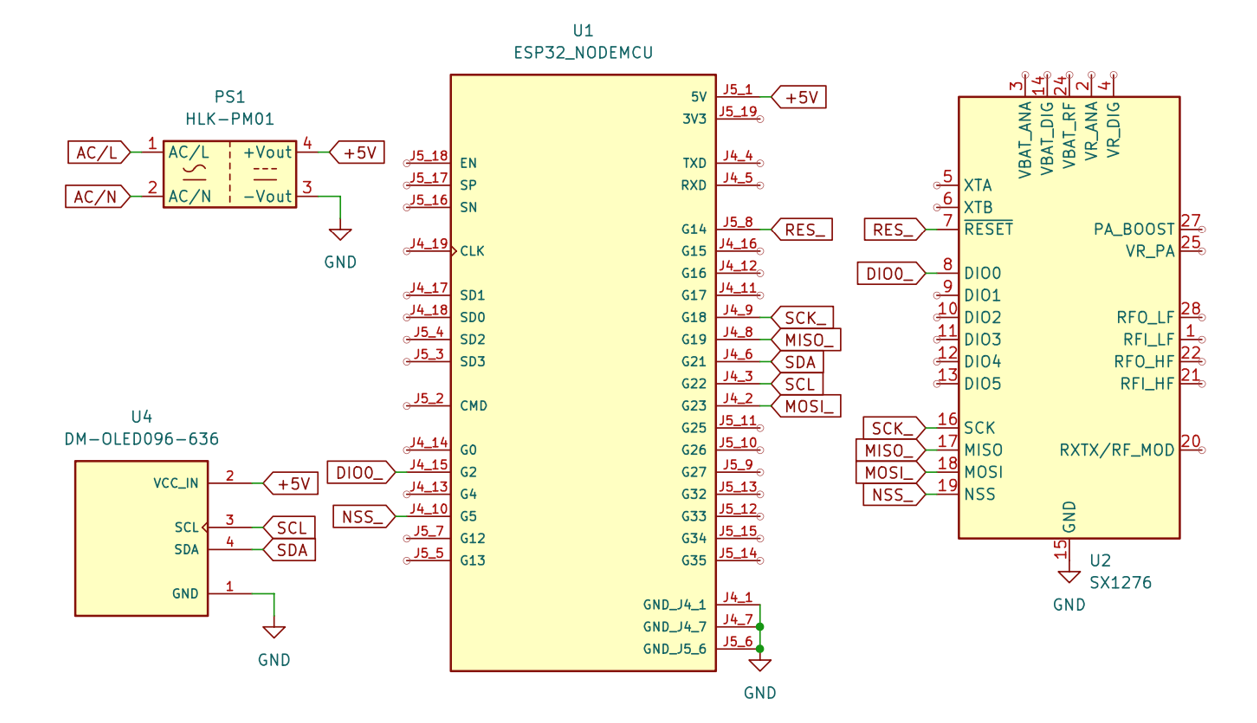LoRa-Based Agricultural Sensor Data System on IoT
DOI:
https://doi.org/10.14456/jcct.2025.7Keywords:
LoRa, IoT, Smart AgricultureAbstract
This article investigates the potential of Long Range (LoRa) technology for transmitting environmental data from agricultural sensor nodes—specifically temperature, relative humidity, light intensity, and soil moisture—to a LoRa gateway, which subsequently forwards the data to the IoT Thingsboard platform via an internet connection. The objective is to develop a foundational system for smart agriculture applications, particularly in rural or farmland areas with limited internet connectivity. The prototype system integrates multiple sensor types, including DHT22, light intensity sensors, rainfall sensors, and soil moisture sensors, with LoRa modules and an ESP-32 microcontroller. Field experiments demonstrated that the LoRa-based communication system operates reliably within a maximum range of 200 meters; beyond this distance, signal loss becomes evident. The DHT22 sensor exhibited an average deviation of 0.73°C in temperature and 7.47% in relative humidity. The light intensity sensor showed an average error of 2.90% compared to a reference instrument. Rainfall and soil moisture sensors produced values consistent with actual water levels and soil depth, respectively. The results suggest that the proposed prototype is feasible for real-world implementation in smart farming systems, particularly in areas with limited digital infrastructure. The system offers a low-cost, energy-efficient solution that can support autonomous environmental monitoring and contribute to sustainable agricultural development.
Downloads
References
Adelantado, F., Vilajosana, X., Tuset-Peiro, P., Martinez, B., Melia-Segui, J., & Watteyne, T. (2017). Understanding the Limits of LoRaWAN. IEEE Communications Magazine, 55(9), 34–40. https://doi.org/10.1109/MCOM.2017.1600613.
Ahmed, N., & Shakoor, N. (2025). Advancing Agriculture through IoT, Big Data, and AI: A Review of Smart Technologies Enabling Sustainability. Smart Agricultural Technology, 10, 100848. https://doi.org/10.1016/j.atech.2025.100848.
Bor, M., Vidler, J., & Roedig, U. (2016, February 15-17). LoRa for the Internet of Things. International Conference on Embedded Wireless Systems and Networks (EWSN) 2016, 361-366. Junction Publishing.
Hasan, H. R., Musamih, A., Salah, K., Jayaraman, R., Omar, M., Arshad, J., & Boscovic, D. (2024). Smart Agriculture Assurance: IoT and Blockchain for Trusted Sustainable Produce. Computers and Electronics in Agriculture, 224, 109184. https://doi.org/10.1016/j.compag.2024.109184.
Islam, M. R., Oliullah, K., Kabir, M. M., Alom, M., & Mridha, M. F. (2023). Machine Learning Enabled IoT System for Soil Nutrients Monitoring and Crop Recommendation. Journal of Agriculture and Food Research, 14, 100880. https://doi.org/10.1016/j.jafr.2023.100880.
Jaywant, A. P., & Desai, A. S. (2024, September 18-20). Cloud-Integrated Precision Agriculture with LoRaWAN and ESP32. 2024 5th International Conference on Smart Electronics and Communication (ICOSEC), 619–624. Kongunadu College of Engineering and Technology. https://doi.org/10.1109/ICOSEC61587.2024.10722074.
Khedo, K. K., Perseedoss, R., & Mungur, A. (2010). A Wireless Sensor Network Air Pollution Monitoring System. International Journal of Wireless & Mobile Networks, 2(2), 31–45. https://doi.org/10.5121/ijwmn.2010.2203.
Liopa-Tsakalidi, A., Thomopoulos, V., Barouchas, P., Boursianis, A. D., & Goudos, S. K. (2024). A LoRaWAN-based IoT Platform for Smart Irrigation in Olive Groves. Smart Agricultural Technology, 9, 100673. https://doi.org/10.1016/j.atech.2024.100673.
Morchid, A., Et-taibi, B., Oughannou, Z., Alami, R. E., Qjidaa, H., Jamil, M. O., Boufounas, E.-M., & Abid, M. R. (2025). IoT-enabled Smart Agriculture for Improving Water Management: A Smart Irrigation Control Using Embedded Systems and Server-Sent Events. Scientific African, 27, e02527. https://doi.org/10.1016/j.sciaf.2024.e02527.
Morchid, A., Jebabra, R., Qjidaa, H., El Alami, R., & Jamil, M. O. (2024). Agri-tech Innovations for Sustainability: A Fire Detection System Based on MQTT Broker and IoT to Improve Environmental Risk Management. Results in Engineering, 24, 103683. https://doi.org/10.1016/j.rineng.2024.103683.
Pouomogne, F. T., Tsefack, M. B. S., Knorn, S., Fotsin, H. B., Kouanou, A. T., & Tchamda, A. R. (2024). Community Farm Monitoring Toolkit: Design and Implementation of a Low-cost Tool for Sustainable Community based Agricultural Projects in Africa. IFAC-PapersOnLine, 58(25), 43–48. https://doi.org/10.1016/j.ifacol.2024.10.235.
Rose, T., Ali, N., & Dong, Y. (2025). Design and Development of an IoT-based Dendrometer System for Real-time Trunk Diameter Monitoring of Christmas Trees. Smart Agricultural Technology, 10, 100765. https://doi.org/10.1016/j.atech.2024.100765.
Shahab, H., Naeem, M., Iqbal, M., Aqeel, M., & Ullah, S. S. (2025). IoT-driven Smart Agricultural Technology for Real-time Soil and Crop Optimization. Smart Agricultural Technology, 10, 100847. https://doi.org/10.1016/j.atech.2025.100847.
Sharma, N., Bhattacharjee, S., Garg, R. D., Sharma, K., & Salim, M. (2024). Sustainable Management and Agriculture Resource Technology System Using Remote Sensing Descriptors and IoT. Geomatica, 76(2), 100040. https://doi.org/10.1016/j.geomat.2024.100040.
Zhang, X., Feng, G., & Sun, X. (2024). Advanced Technologies of Soil Moisture Monitoring in Precision Agriculture: A Review. Journal of Agriculture and Food Research, 18, 101473. https://doi.org/10.1016/j.jafr.2024.101473.

Downloads
Published
How to Cite
Issue
Section
Categories
License
Copyright (c) 2025 Journal of Computer and Creative Technology

This work is licensed under a Creative Commons Attribution-NonCommercial-NoDerivatives 4.0 International License.



























